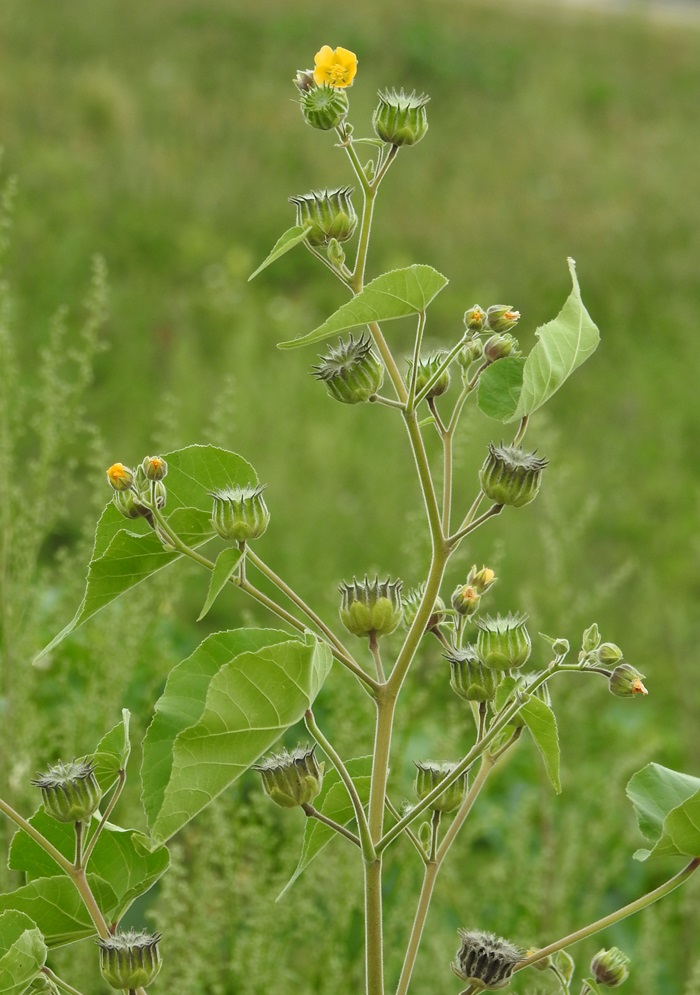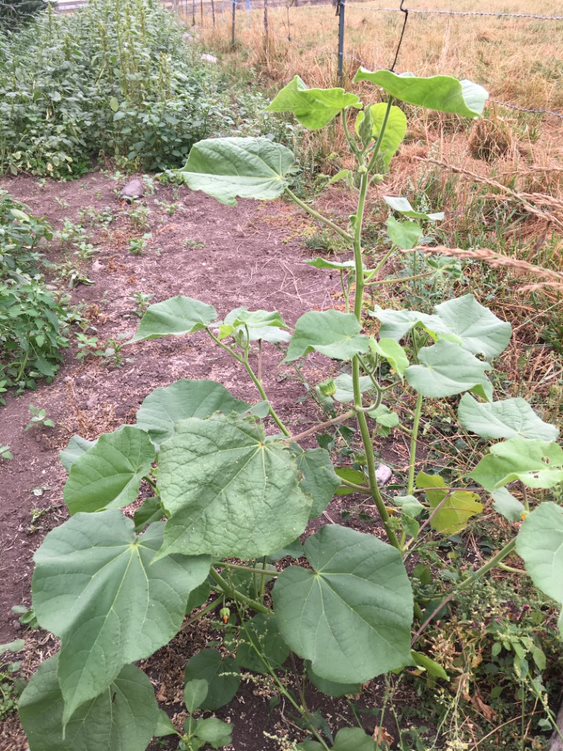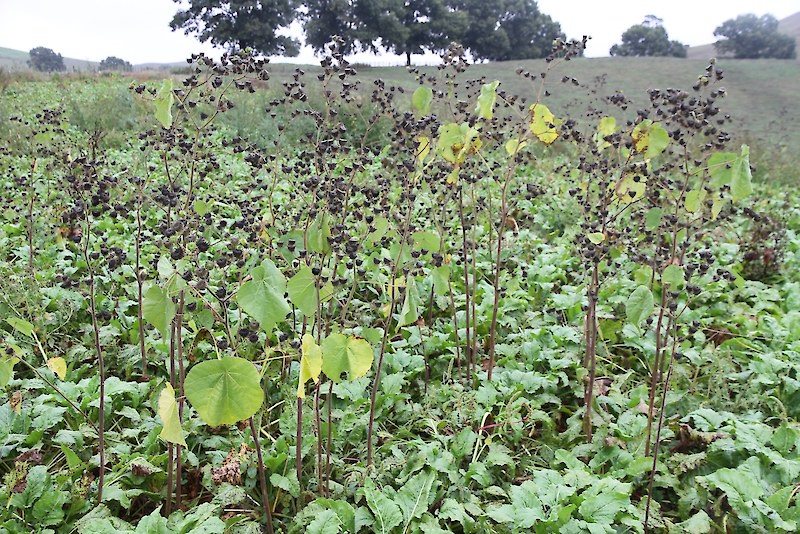Velvetleaf identification and control
Information about the noxious weed velvetleaf. Velvetleaf is also known by its Latin name, Abutilon theophrasti.
About this weed
Velvetleaf is a regulated Class B noxious weed. This means control is required in King County under the state noxious weed law. Velvetleaf is also on the Washington quarantine list and it is illegal to buy, sell, or offer it for sale in the state.
Velvetleaf is known as Abutilon theophrasti and it is in the mallow family. Other common names for this plant include Indian mallow, butterprint, and buttonweed.

Why it's a problem
While velvetleaf grows throughout much of North America, it is still uncommon in Washington state. We still have a chance to eradicate this weed before it spreads.
It grows in orchards, vineyards, crop fields, roadsides, and gardens. Velvetleaf can reduce crop development. It grows tall during the summer before fall harvest. It competes with crops for nutrients and shades out developing plants. Velvetleaf produces a chemical that slows and stops growth of some crops.
It also harbors several diseases and unwanted pests.
Plant description
Velvetleaf grows 3 to 8 feet tall on thick, branched stems and is covered with very soft, velvety hairs.
It blooms in the summer (July to September) in Washington. Flowers are yellow to yellow-orange with 5 petals; they form on upper branches. Flowers have many yellow stamens (stalks in flower center) which often fuse to form a “tube.”
Leaves are large and heart-shaped with pointed tips. Leaves are alternate (grow at different points along the stem) and have long, stout leaf stalks. They have a distinct odor when crushed.
Velvetleaf reproduces by seed; 700 to 17,000 seeds are produced by each plant. Seeds can survive in soil for 50 to 60 years, even after passing through animal digestive tracks.
Seeds are held in a cup-shaped capsule. The capsule is composed of 12 to 15 circularly arranged smaller woody compartments. Seeds develop in these compartments and are released by the plant when matured.










Be aware of look-alike plants
More information about some of the plants velvetleaf is often confused with:
When in doubt, take photos and share them with us or report them on iNaturalist.
What to do if you find it
Property owners are required to control velvetleaf on lands that they manage. Please notify us if you see velvetleaf growing in King County.
Our program staff can provide you with site-specific advice on how best to remove it. We map all known locations of regulated noxious weeds to help locate new infestations in time to control them.
Control methods
We recommend using a combination of methods to control noxious weeds. In areas with few weeds, it is important to act quickly before they become harder to control. Make a long-term plan as it often takes several years to get rid of most weeds. Start in the least infested areas first and then move into more heavily infested areas.
Manual control
You can pull or dig up velvetleaf before the plants go to seed. Seeds can live for 50 years or more. Be sure to return to the same area each year and look for new plants.
Mechanical control
It will take much longer to get rid of large populations because of the long-lived seeds. You can mow velvetleaf close to the ground while the plants are still small. Do not till or plow infested areas because this promotes seed germination.
Cultural control
Crop rotation helps. It prevents favorable growing conditions for velvetleaf. Avoid using too much fertilizer because velvetleaf is opportunistic. Velvetleaf will use the added nutrients to extend its flowering period and increase seed production.
Chemical control
Stay safe when using herbicide:
- Always read the label before use.
- Wear a long-sleeved shirt, long pants, shoes, and eye protection.
-
Follow state and local regulations.
There are also chemical control options for velvetleaf in most crops and sites. Spraying is only effective when the weeds are less than 4 inches tall. Also, velvetleaf leaves tend to droop or wilt in the late afternoon, so spraying is more effective earlier in the day.
For more specific herbicide information, see the PNW Pest Management Handbook.
For more information or a site-specific recommendation in King County, contact the noxious weed program. For information in other locations, contact your local weed board or extension office.
Disposal instructions
Bag and dispose of all plant parts in the garbage.
Noxious Weed Disposal - Washington State Noxious Weed Control Board

 Translate
Translate